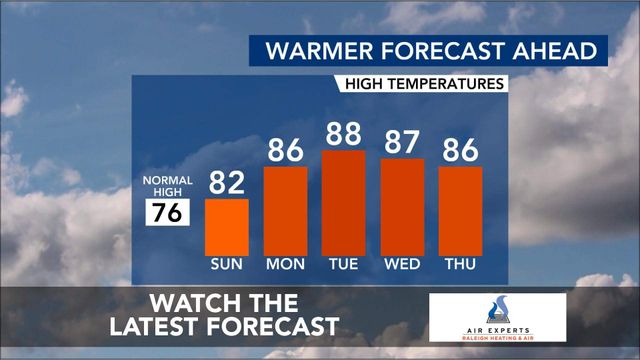COVID worries create a math lesson for sports venues, fans
Analytics are part of the sports landscape when it comes to evaluating players and even play calling. Now they are also part of the equation as teams try to figure out if they can allow fans to attend live sporting events.
Thanks to some Triangle teamwork, doing that math is as simple as a computer model created by Cary-based SAS.
"Essentially with Covid, like the rest of the world, SAS had to pivot … We began working on this about a month into the pandemic," says Dan Axman, a sports analytics advisor with SAS. He met with WRAL News to show off the company’s new Venue Optimization Solution software.
"The importance of this solution is that it allows end users to run several scenarios within a very short amount of time, empowering them to analyze and make those decisions very quickly," explains Axman.
SAS teamed up with North Carolina State University to analyze capacity, seat sizes, aisle sizes and seat prices at Carter-Finley Stadium. Schools can choose multiple variables like group seating for families and differing amounts of social distancing to safely get the greatest number of fans in the stadium.
"We have a family of four for example. They are sitting together here. Their safety circle is visible," says Axman’s colleague, Sertalp Cay, who created the platform.
During the demo, Cay clicked on one seat and explained, "If you point at any person in the group, you can see their own safety circle, and it also points out the closest entrance and exit seat."
With standard 6 feet social distancing, Carter-Finley could safely have a 20% capacity. If you want 6 feet with paths so fans can leave their seats without violating someone else’s space, the capacity drops to 11%.
The one bright side is you wouldn’t have to continually get up from your seat every time someone needs to get food or visit the restroom. "This way no one is crossing over one another when they’re coming and going from the respective section," says Axman.
Last month, WRAL Investigates used virtual reality to see what Carter-Finley could look like. We found a section that normally holds 1,500 fans could only handle 160, which is about the same 11% capacity found by the SAS program.
Axman says the SAS program also allows teams to test different scenarios to increase ticket sale revenue based on seat prices.
No matter what, the math is going to be difficult this year for college sports programs. Axman says the flexibility in the SAS program will let schools get the most out of the season, if it happens.
"We’ve seen percentages range with the 6 foot distance considering entry and exit paths between 15 and 25%," he said.
The software can also be customized to maximize seating in theaters, school classrooms and lecture halls as well as public transportation.











